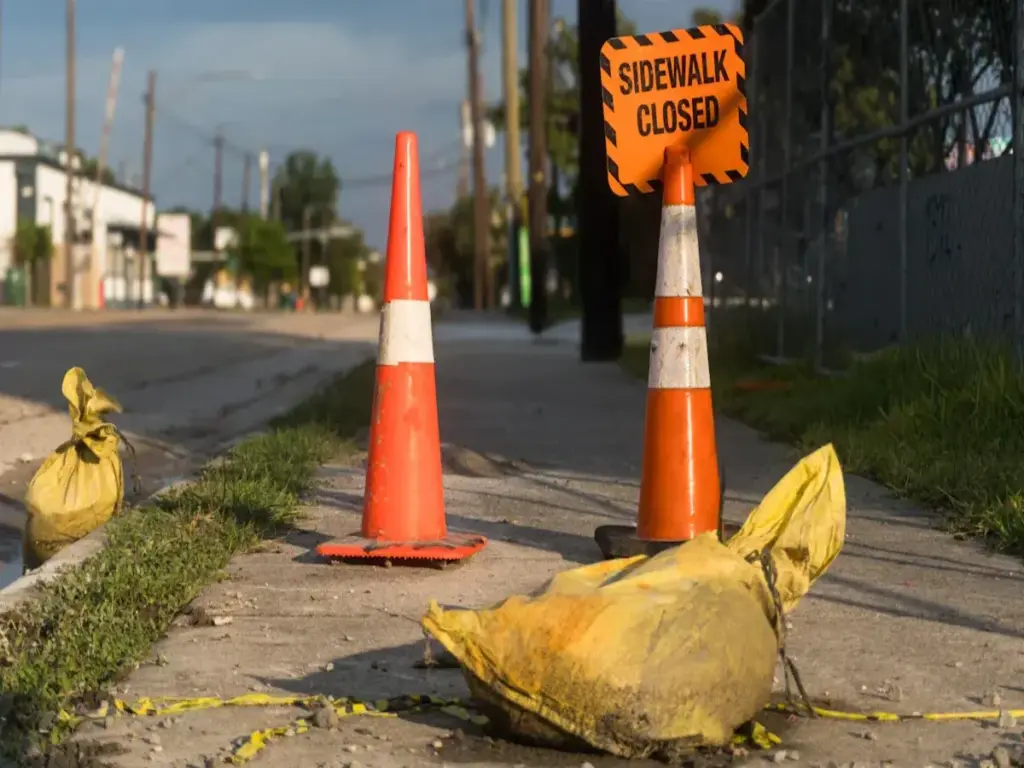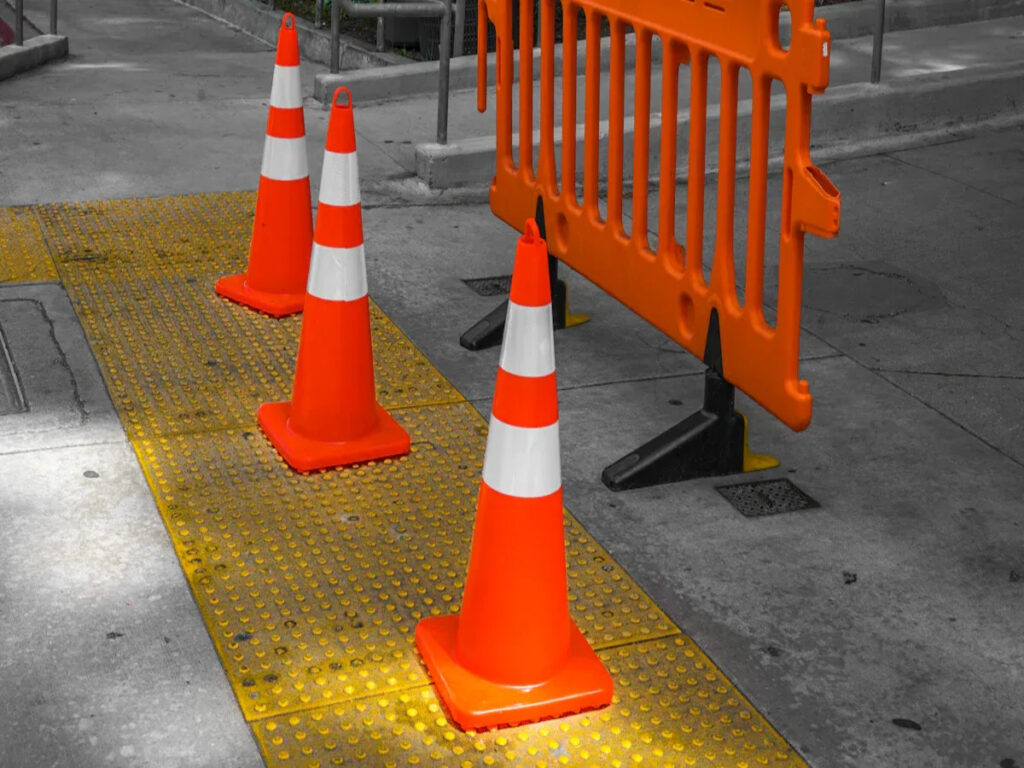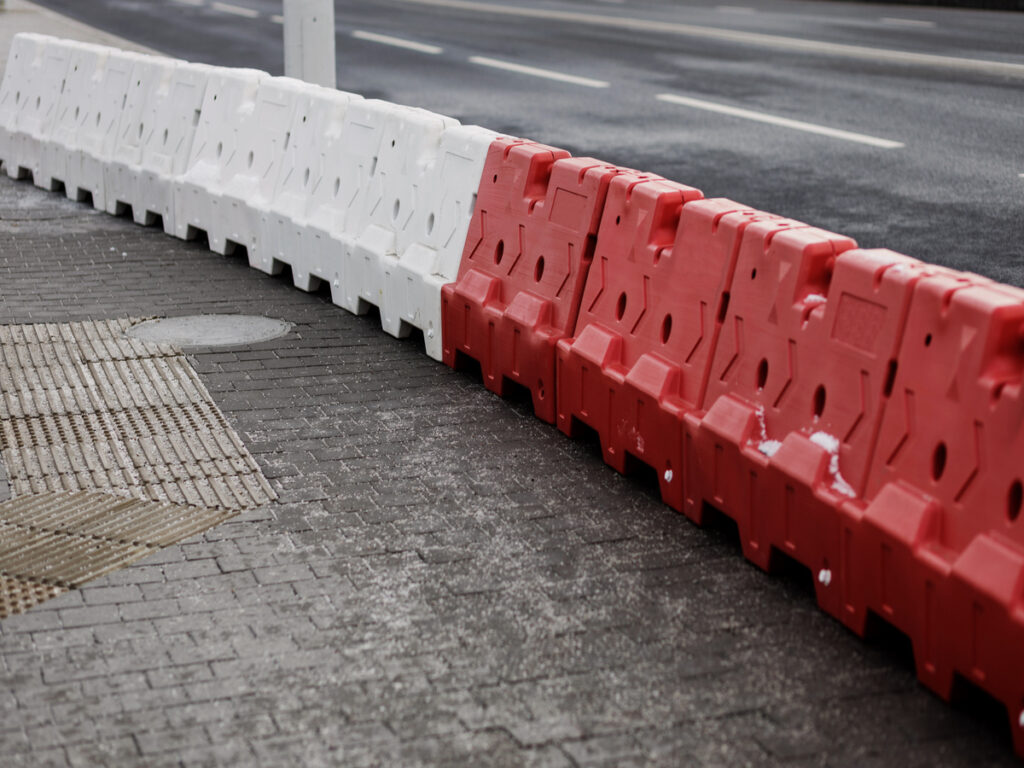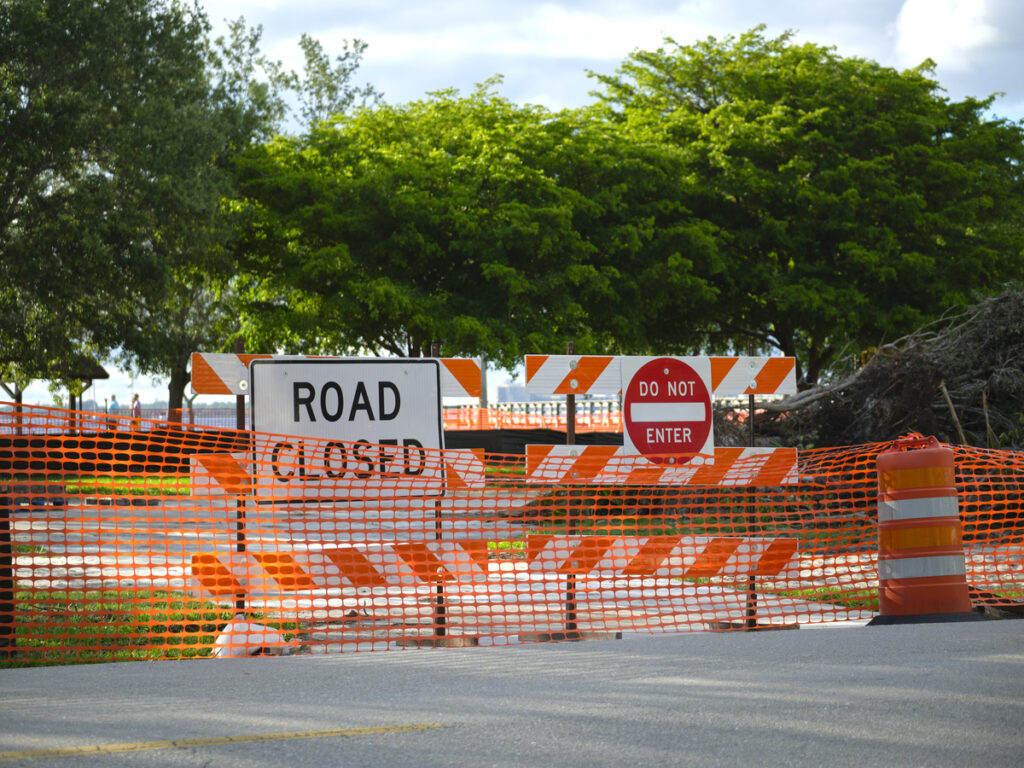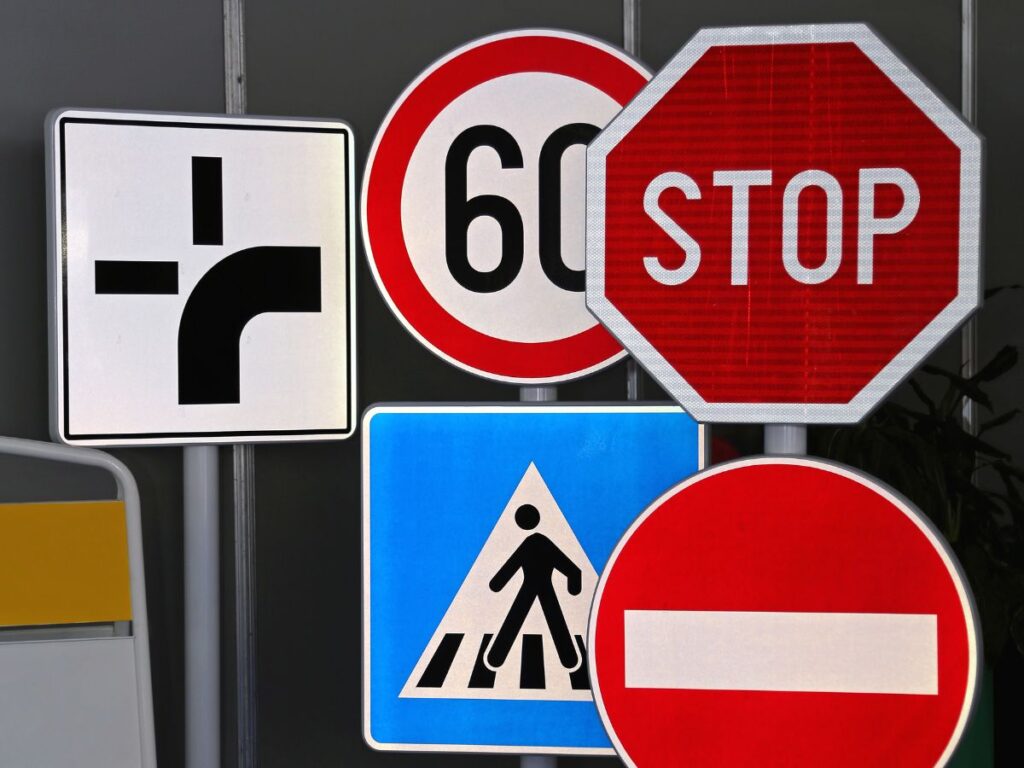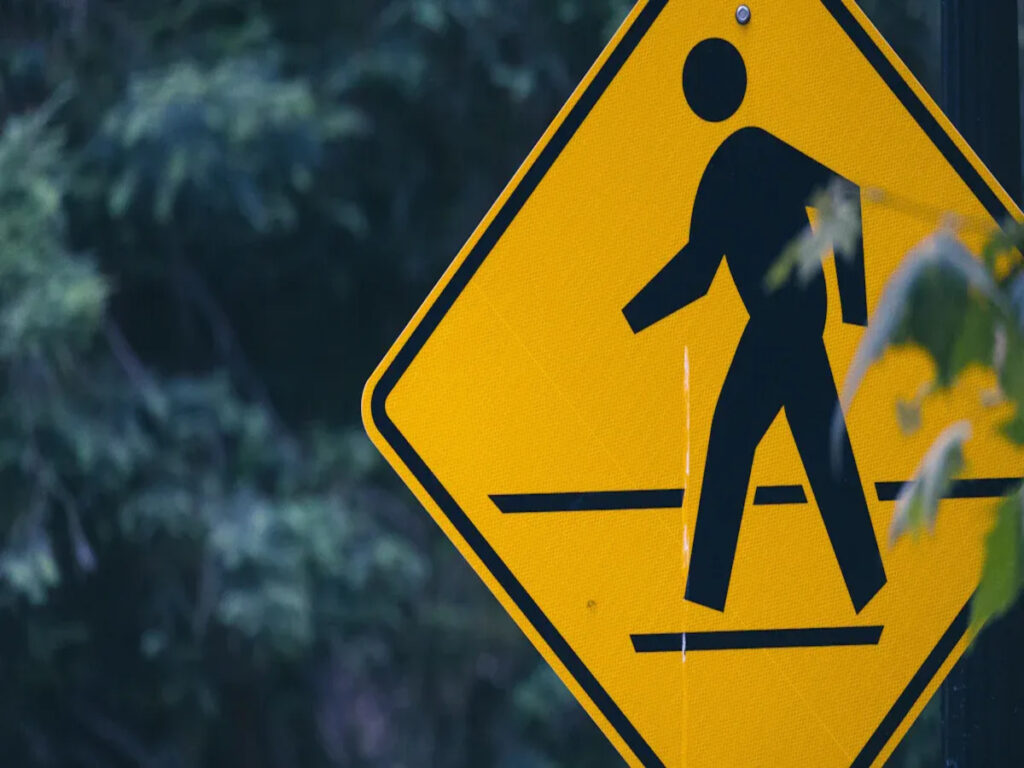
जैसा 1742.10 ऑस्ट्रेलिया में पैदल यात्री यातायात संकेतों और साझा क्षेत्रों के लिए स्पष्ट नियम देता है. साझा क्षेत्र वे स्थान हैं जहां लोग और कारें एक ही स्थान का उपयोग करते हैं, जैसे लेनवे या छोटे प्लाज़ा. इन क्षेत्रों में पैदल यात्रियों को पहले जाने दिया जाता है और गति सीमा कम होती है. मानक यह सुनिश्चित करता है कि प्रत्येक चिन्ह एक जैसा दिखे और देखने में आसान हो. परिषदों, योजनाकारों, और सड़क उपयोगकर्ताओं को सुरक्षित और अधिक व्यवस्थित सड़कें मिलती हैं.
ओप्ट्रैफ़िक आपूर्ति यातायात संकेत, including shared zone signs and pedestrian warning signs that follow AS 1742.10 बिल्कुल, helping local councils and contractors deliver safe, compliant streetscapes.
चाबी छीनना
- Shared zones are places where people and cars use the same area. Pedestrians always come first. Cars must go slowly, usually only 10 किमी/घंटा.
- जैसा 1742.10 gives clear rules for signs in shared zones. It says there must be special signs at every entry and exit. This helps everyone know what to do and keeps them safe.
- Pedestrian traffic signs must use shiny materials. They must be put in spots that are easy to see day and night. The signs should not block anyone’s view.
- Drivers must always let pedestrians go first. They must follow the speed limit and obey all signs. This keeps everyone safe in shared zones.
- Councils must put up, पर ध्यान रखना, and check signs often. This keeps shared zones safe, कानूनी, and easy for everyone to understand.
जैसा 1742.10 अवलोकन
Shared Zones Defined
साझा क्षेत्र are places where people and cars move together. You can find them in laneways, स्थानों, या शांत सड़कें. These areas do not have kerbs or lane lines. This makes everyone use the same road space. People walking always come first. Drivers must go slow and look out for walkers. Clear signs are at every entry and exit. These signs tell everyone when they are in or out of the shared zone.
बख्शीश: Shared zones work well where there are few cars and many people walking. Councils pick these spots to make streets safer and friendlier.
A shared zone needs some main things:
- Entry and exit have approved signs.
- The road has no kerbs or lane markings.
- People walking come before cars.
- Speed limits are very low, अक्सर 10 किमी/घंटा.
- Raised surfaces or bollards help slow down cars.
These things help everyone know what to do in the area. The aim is to make the place safe and nice for all.
Standard’s Purpose
जैसा 1742.10 gives rules for signs that keep people safe. It covers many road places, like pedestrian crossings, children’s crossings, mid-block signals, pedestrian refuges, and malls. The rules make sure signs and markings look the same everywhere in Australia. This helps drivers and people walking know what to expect.
The main goal is to make walking safer in shared spaces. It also helps councils and planners make better streets for walking and less risky for traffic. के रूप में उपयोग करके 1742.10, communities can have streets that are safer and easier for all.
Learn more in our detailed blog: के रूप में समझ 1742: ऑस्ट्रेलियाई यातायात साइन विनियमों की नींव
Pedestrian Traffic Signs
Required Signs
Shared zones must have clear pedestrian traffic signs. The standard says some signs are always needed. At every entry, councils put up the SHARED ZONE sign (R10-5). This sign tells drivers and people walking they are in a shared space. At every exit, the END SHARED ZONE sign (R10-6) प्रयोग किया जाता है. This sign shows the shared zone rules have ended.
Some shared zones also have a pedestrian crossing sign (R3-1). This sign shows where people walking can cross first. Councils might add more signs for speed limits or vehicle rules. These extra signs help everyone know what to do.
टिप्पणी: Every shared zone must have the right signs at all entries and exits. यदि संकेत गायब हैं, the area can be confusing and unsafe.
डिज़ाइन और प्लेसमेंट
Pedestrian traffic signs in shared zones must follow strict design rules. The standard says signs need strong materials. Councils must use कक्षा 1 या 1W चिंतनशील शीटिंग. This makes signs easy to see day and night.
Where traffic signs go is very important. Signs must stand up straight and face traffic. They should not block what drivers or people walking see. Councils must put road signs at a good height and angle. Good placement helps everyone see the signs and follow the rules.
Some shared zones use extra things to help the signs. Raised thresholds, textured ground, or bollards can show where the shared area starts. Pavement markings, like painted lines or symbols, are not needed but are a good idea. These markings remind drivers to slow down and watch for people walking.
Here is a table with the main signs and features:
| Sign or Feature | उद्देश्य | Required or Optional |
|---|---|---|
| SHARED ZONE (R10-5) | Shows entry to shared zone | Required |
| END SHARED ZONE (R10-6) | Shows exit from shared zone | Required |
| पैदल पार पथ (R3-1) | Shows marked pedestrian crossing | वैकल्पिक |
| गति सीमा संकेत | Shows speed rules (अक्सर 10 किमी/घंटा) | वैकल्पिक |
| रास्ते के फर्श पर लगाए गए निशान | Reminds about pedestrian priority | वैकल्पिक |
| Bollards/Thresholds | Slows cars, marks zone edge | वैकल्पिक |
बख्शीश: Councils should check signs often. Signs that are clean, straight, and easy to see keep shared zones safe and legal.
Pedestrian traffic signs are very important in shared zones. Good design and careful placement help everyone know where they are and what to do. These signs help keep both drivers and people walking safe.
Shared Zone Rules
रफ्तार का प्रतिबंध
Shared zones use very low speed limits. The standard sets a maximum of 10 km/h in most cases. This slow speed helps drivers see people walking and stop quickly if needed. Councils place speed limit signs at the start of each shared zone. These signs remind drivers to slow down before entering. Raised surfaces and textured ground also help keep speeds low. Drivers must follow the posted speed at all times, even when the street looks empty.
टिप्पणी: Speed limits in shared zones are not just suggestions. Police and council officers can enforce these limits. Fines may apply if drivers go too fast.
Pedestrian Priority
People walking always come first in shared zones. The rules say drivers must give way to anyone on foot. This means drivers must stop if someone steps onto the road. Pedestrian traffic signs show that people have priority. Councils may use extra markings or symbols on the ground to remind everyone about this rule.
Shared zones do not have kerbs or lane lines. The road and footpath blend together. This design makes drivers pay more attention to people around them. Traffic calming features, like bollards or planters, help slow cars and make the area safer for walking.
बख्शीश: Pedestrian priority means children, seniors, and people with disabilities can cross safely. Everyone should feel safe to walk anywhere in the zone.
Driver Obligations
Drivers have special duties in shared zones. They must:
- Give way to all pedestrians, even if the person steps out suddenly.
- Keep to the 10 km/h speed limit at all times.
- Avoid using the horn unless there is an emergency.
- Watch for people crossing from any direction.
- Follow any extra rules shown on signs, such as no parking or loading times.
Councils use pedestrian traffic signs and other signals to make these rules clear. If a driver breaks the rules, police or council officers can give fines or other penalties. Shared zones must have the right signs and markings to be legal. Missing or unclear signs can make the rules hard to enforce.
| Driver Rule | इसका क्या मतलब है | How It Is Enforced |
|---|---|---|
| Give way to pedestrians | Stop for anyone walking | Police/council checks |
| Keep to 10 किमी/घंटा | Never drive faster than posted limit | Speed cameras, patrols |
| No horn use | Only use horn for emergencies | ऑन-द-स्पॉट जुर्माना |
| Follow extra signs | Obey all posted rules | नियमित निरीक्षण |
अनुस्मारक: Councils must keep signs clean and easy to see. Good signs help everyone follow the rules and keep the shared zone safe.
Implementation and Best Practice
साइन इंस्टॉलेशन
Putting up signs the right way helps everyone know the rules. Councils must put entry and exit signs at every way in or out. Signs should be between 1.5 और 2.2 मीटर ऊंचा. This makes them easy to see over cars and bushes. Signs go on the left side of the road. If the entry is wide, signs can go on both sides. This helps people spot them quickly. Signs must not block where people walk. Drivers and people walking need to see signs clearly.
Signs use very shiny materials like Class 1W or Class 400 कनवास. This helps people see them at night or in bad weather. Some councils use two languages on signs for people who do not speak English. Signs must follow the rules in जैसा 1742 और के रूप में/nzs 1906.1. इन नियमों का कहना है कि उन्हें कितने बड़े संकेत होने चाहिए और उन्हें कहां रखा जाना चाहिए. Adding things like raised ground or plants can slow down cars and keep people safe.
बख्शीश: Good sign spots give drivers time to see and react. यह सभी को सुरक्षित रखता है.
रखरखाव
Checking signs often keeps shared zones safe and legal. Councils must look at signs to make sure they are clean and straight. पेड़, खड़ी कार्स, or dirt can hide signs. Workers need to move these things fast. Shiny parts on signs can get dull after a while. Councils must swap old signs when they stop shining. Teams should also check if signs have moved or been broken.
A simple checklist for maintenance:
- गंदगी के लिए देखो, हानि, या फीका संकेत
- Clear anything hiding the signs
- Change signs that do not shine well
- Make sure signs are at the right height and angle
सामान्य नुकसान
Some shared zones do not work because signs are not put up right or are not looked after. If entry or exit signs are missing, ड्राइवर भ्रमित हो जाते हैं. The zone cannot be enforced. Signs that are too low or hidden are hard to see. Not checking signs often means they can fade or get blocked. This puts people in danger. Councils must get the right approval before putting up signs. यदि वे इसे छोड़ देते हैं, the shared zone may not be legal.
अनुस्मारक: सावधान योजना, नियमित जाँच, and the right approval keep shared zones safe and legal for all.
जैसा 1742.10 gives simple rules for shared zones. Councils and planners follow these rules to put up pedestrian traffic signs. ये संकेत सभी को सुरक्षित रखने में मदद करते हैं. जब संकेत समान दिखते हैं, it is easier for drivers and people walking to know what to do. Following the standard helps police and councils make sure rules are followed. This makes streets safer. Councils should check shared zones now and make changes if needed. Good signs and clear rules help make streets safer and nicer for everyone.
अक्सर पूछे जाने वाले प्रश्न
What is a shared zone?
A shared zone is a street or area where people walk and vehicles move together. Pedestrians have priority. Drivers must travel slowly and give way at all times.
Which signs are mandatory in a shared zone?
Every shared zone must display the SHARED ZONE (R10-5) sign at each entry and the END SHARED ZONE (R10-6) sign at every exit. These signs show where the rules start and finish.
How fast can vehicles travel in a shared zone?
Vehicles must not exceed 10 km/h in most shared zones. Councils use speed limit signs and road features to remind drivers to keep speeds low.
Who enforces the rules in shared zones?
Police and council officers check that drivers follow the rules. They can give fines if someone breaks the speed limit or does not give way to pedestrians.
Can councils add extra signs or markings?
हाँ. Councils may use extra signs for speed, पार्किंग, or access. Pavement markings and bollards help show the shared zone and keep everyone safe.
बख्शीश: Clear signs and markings help everyone understand the rules in a shared zone.

